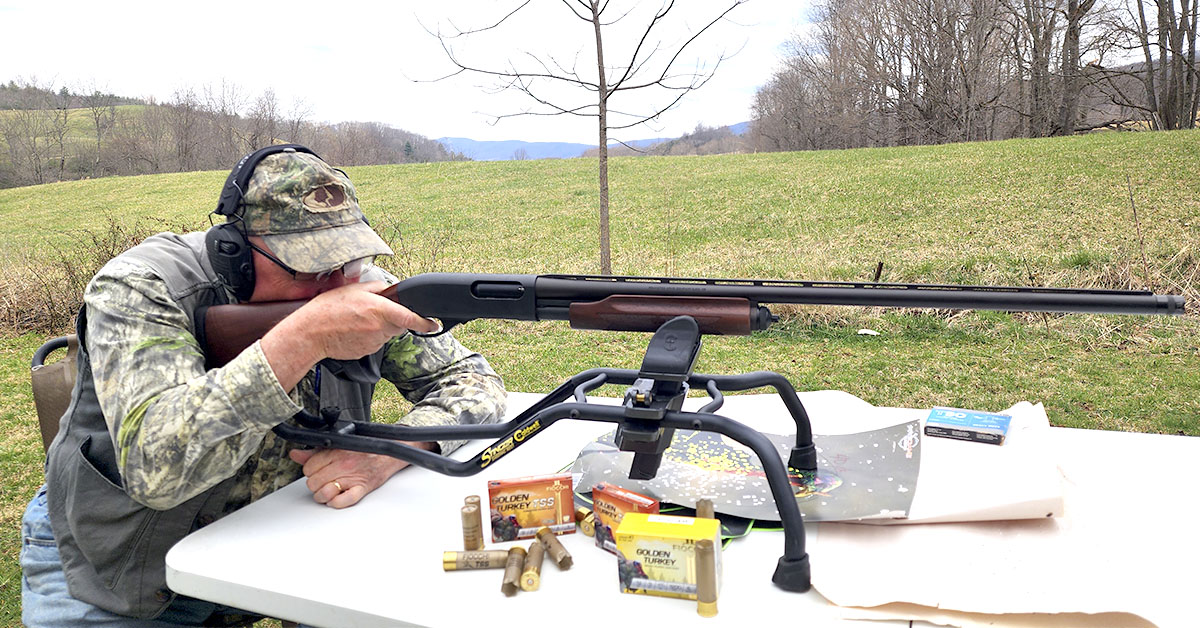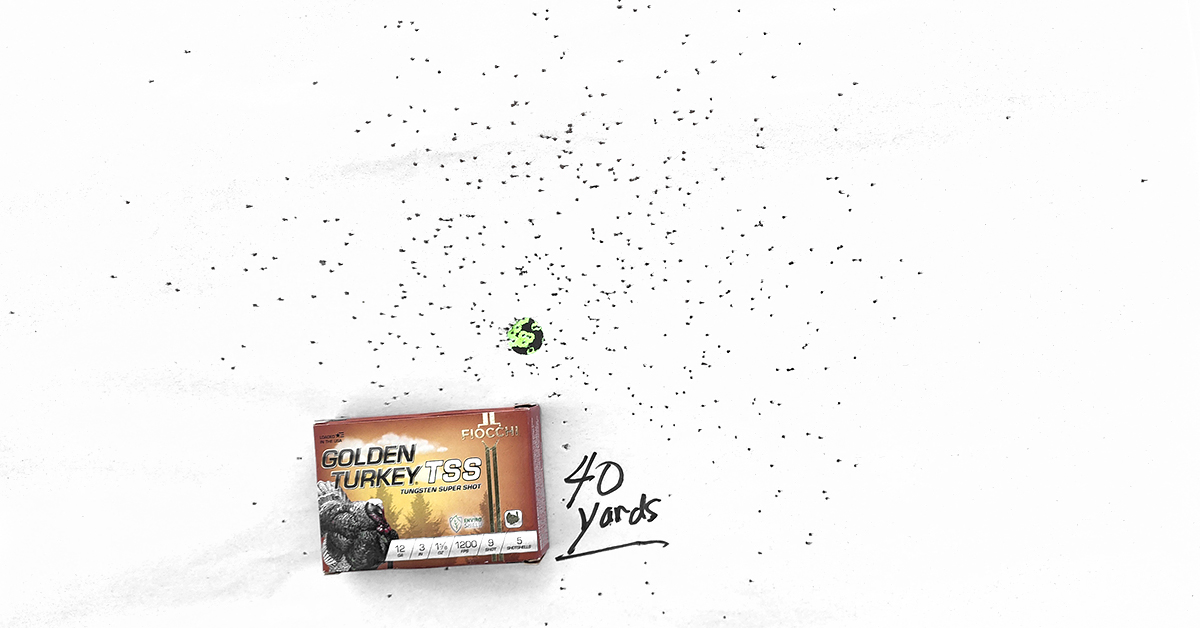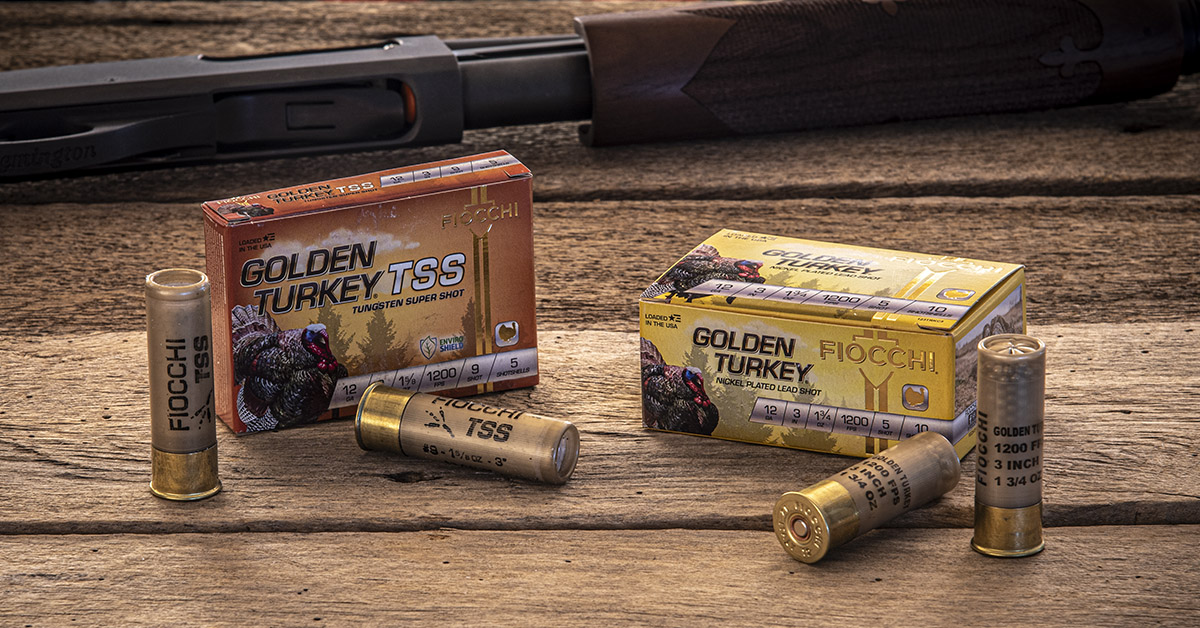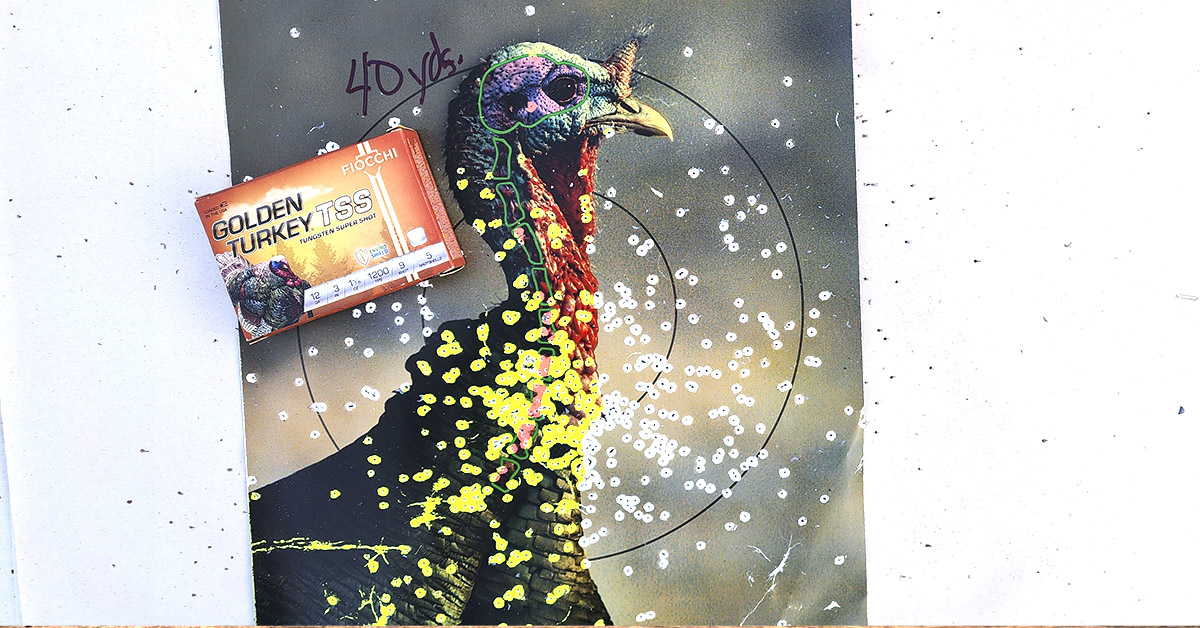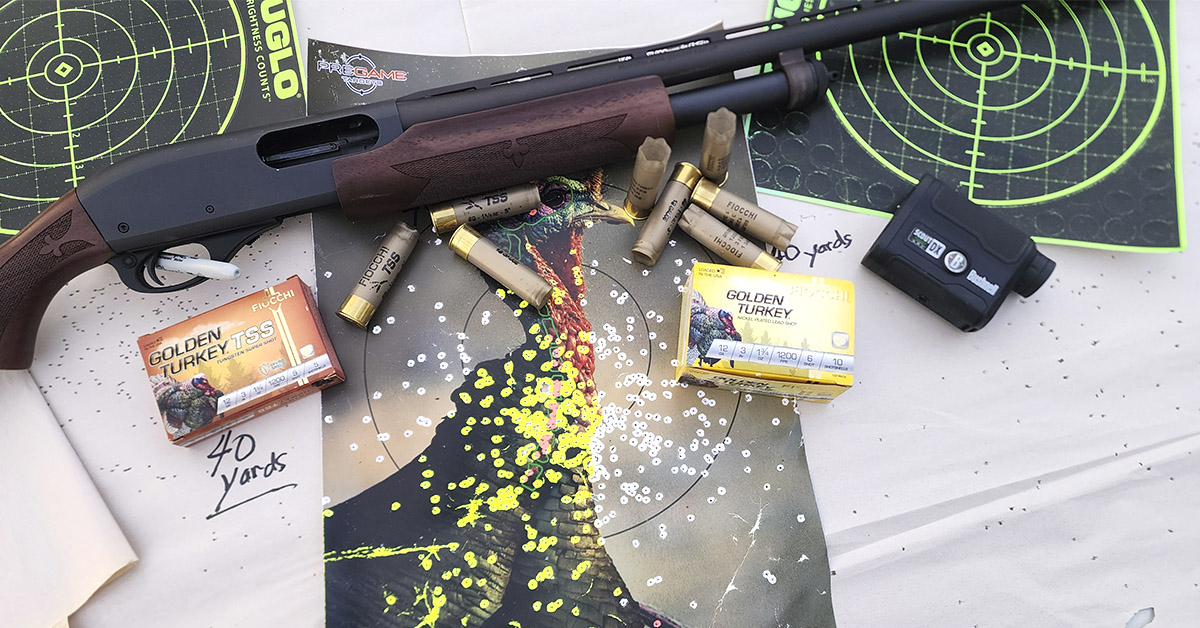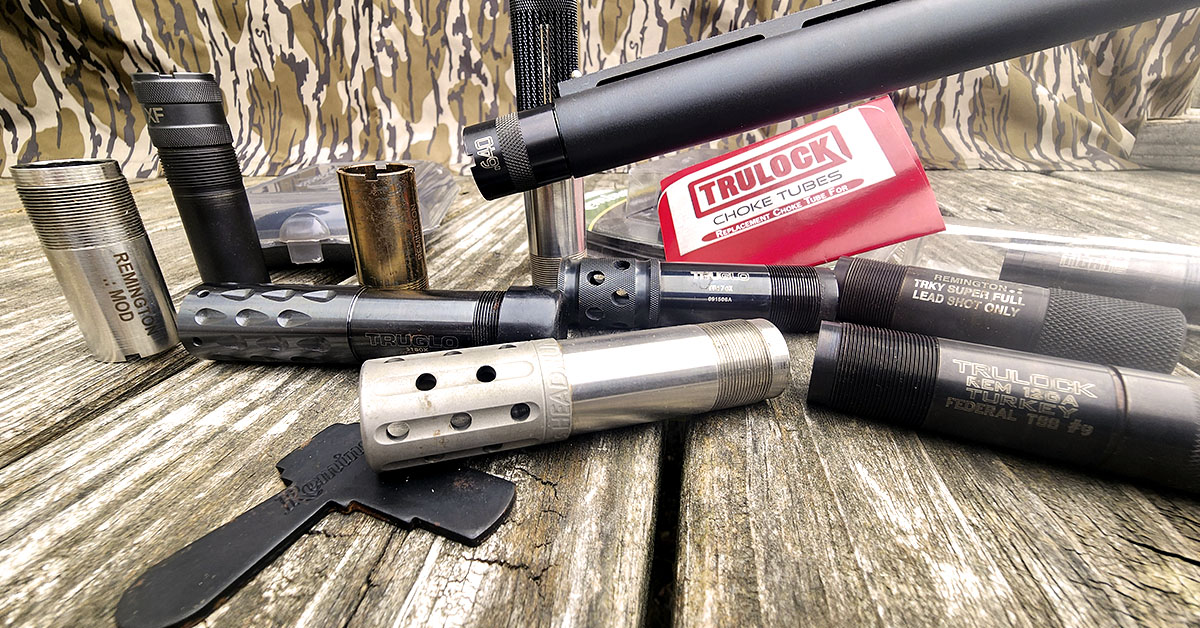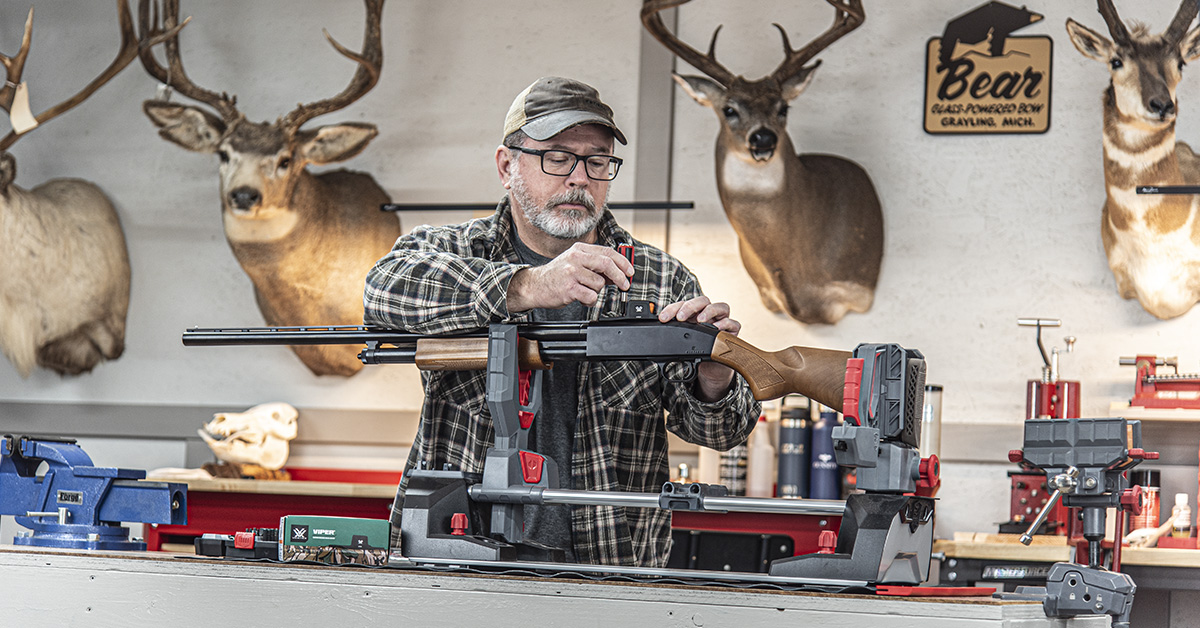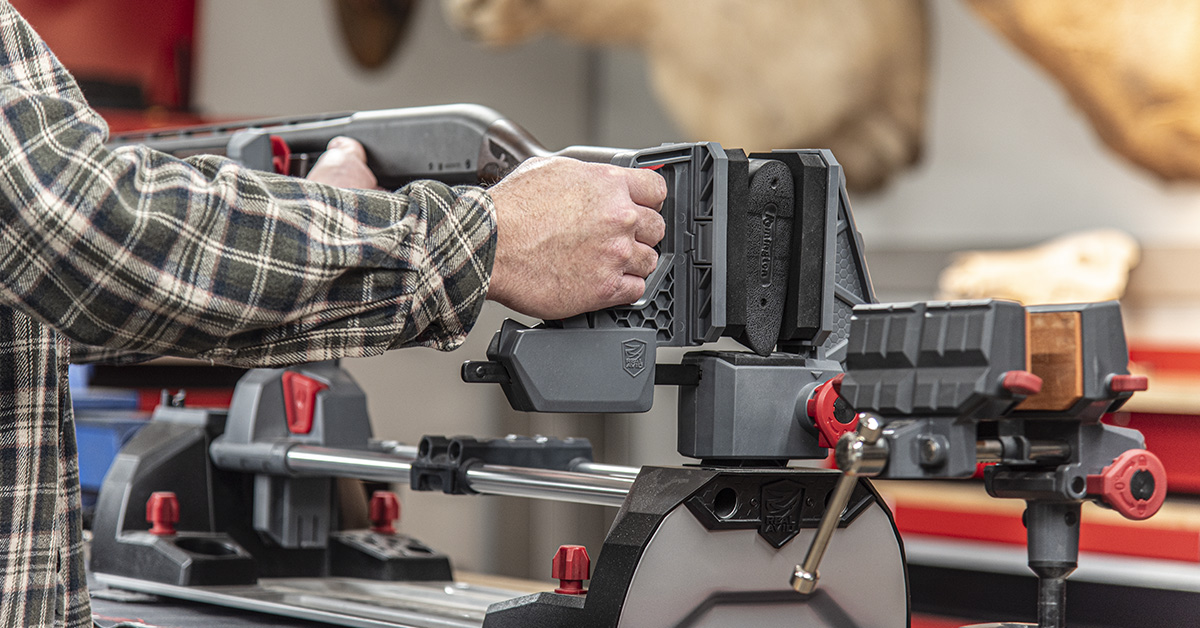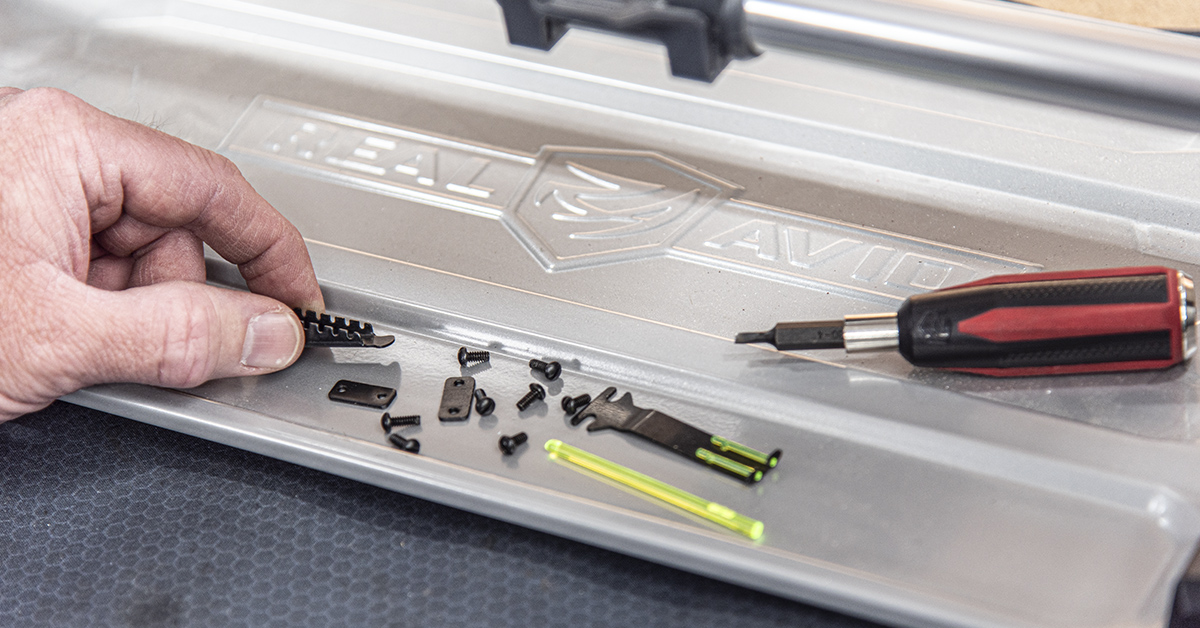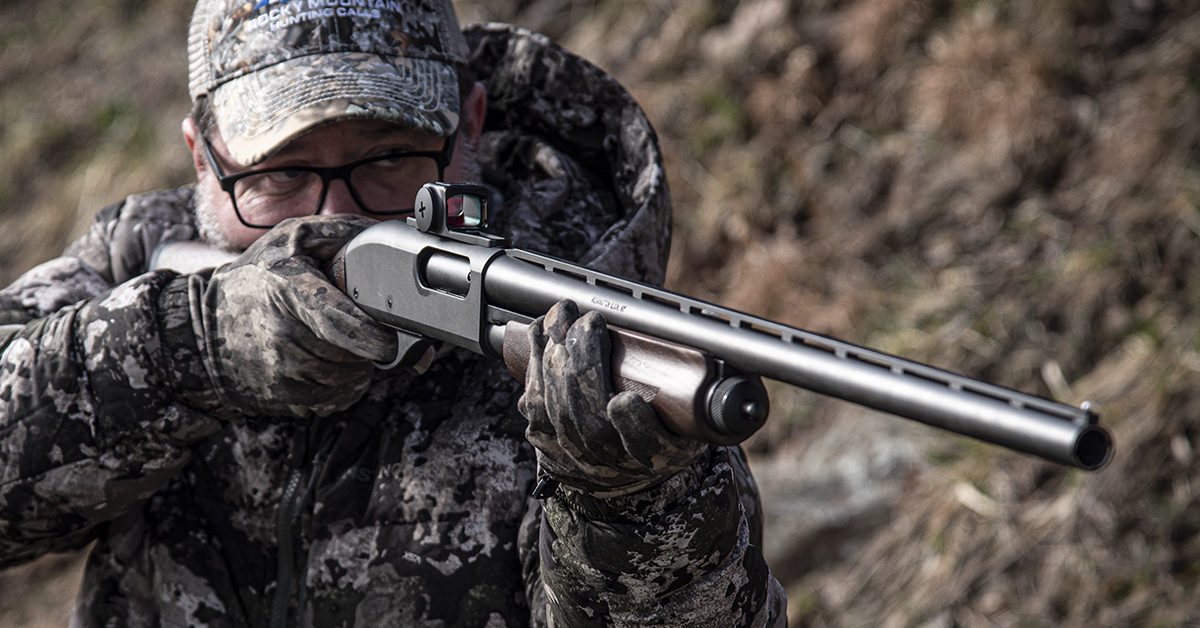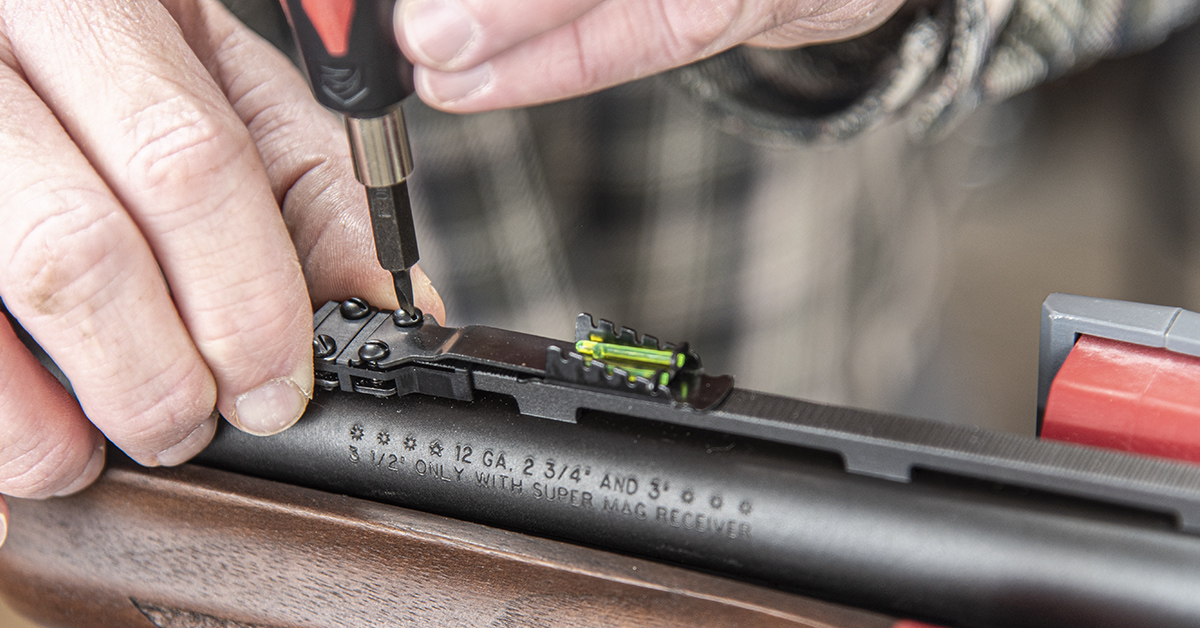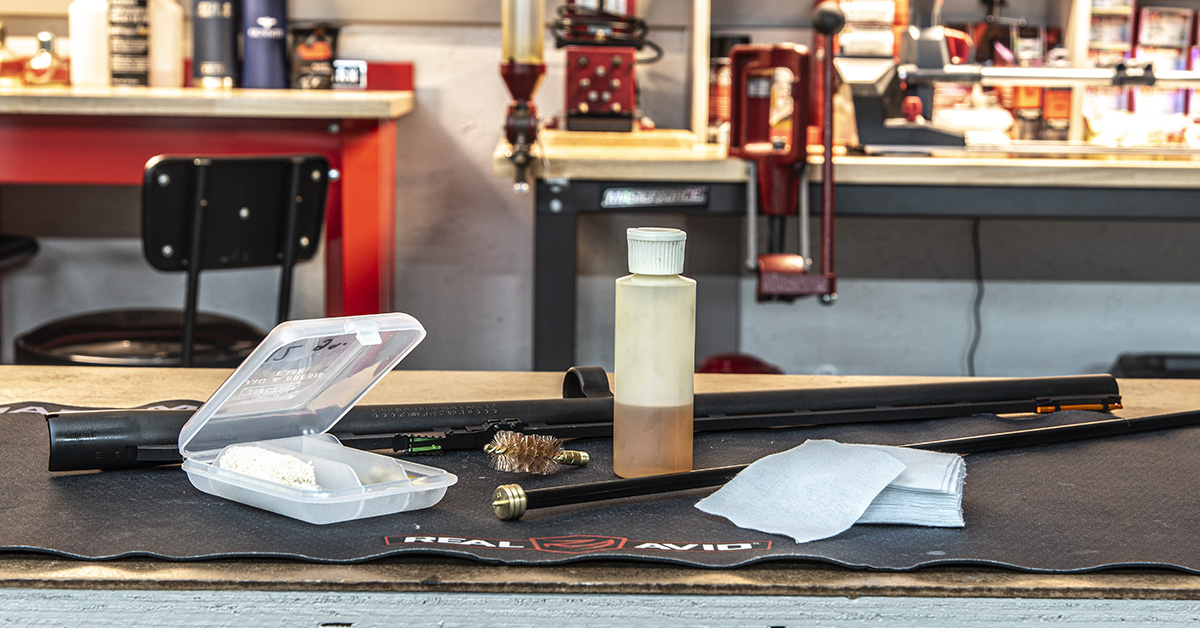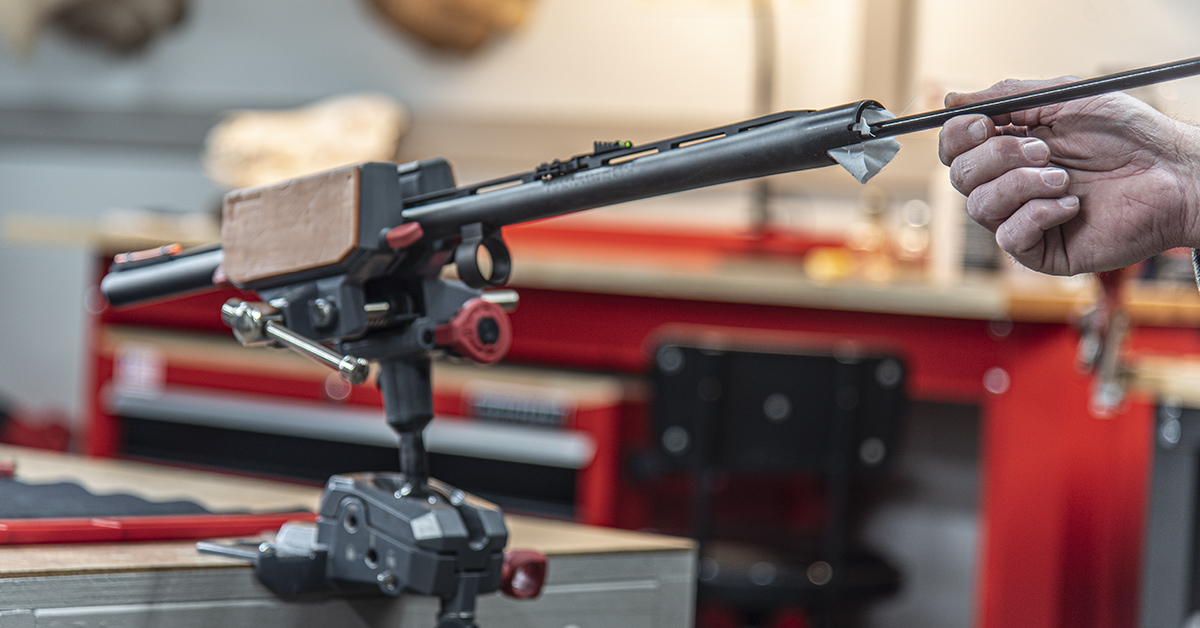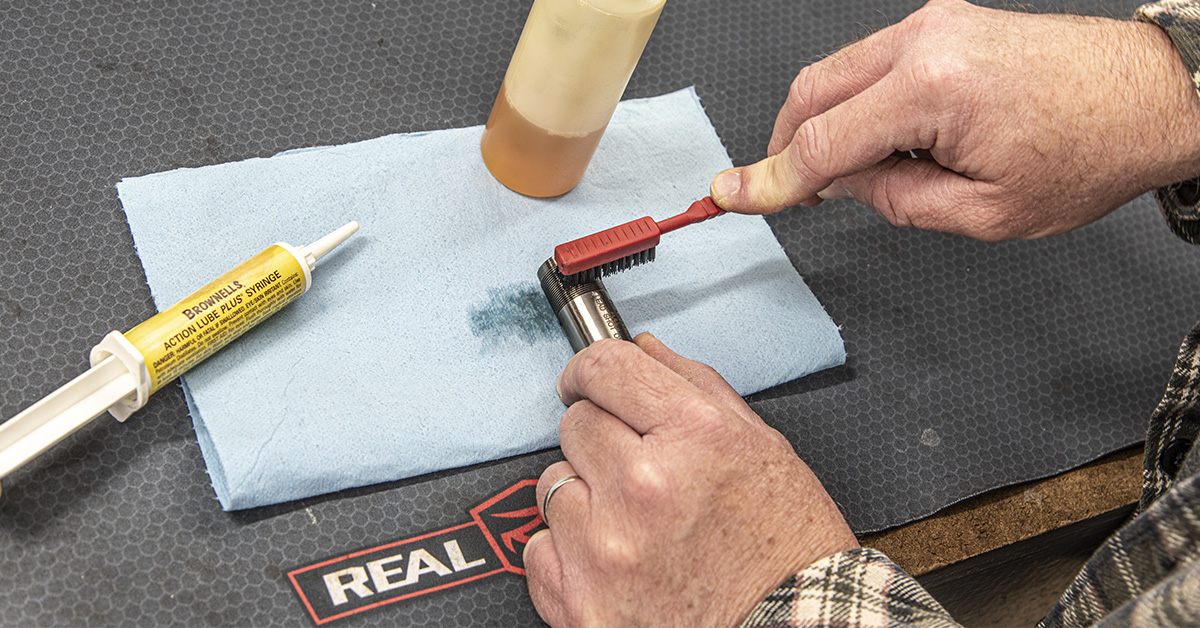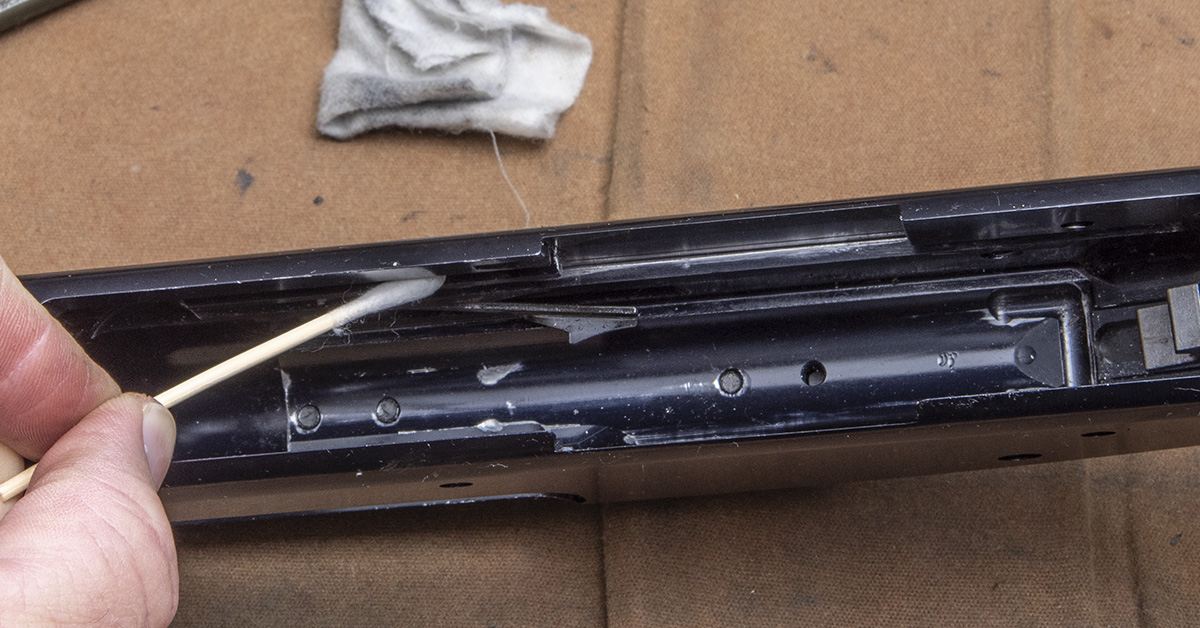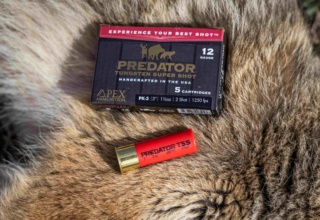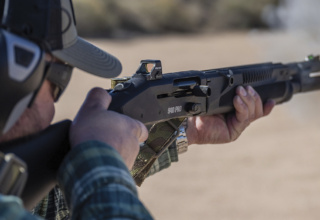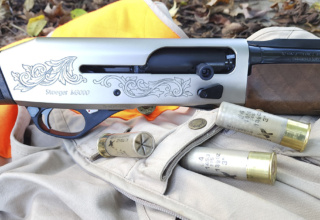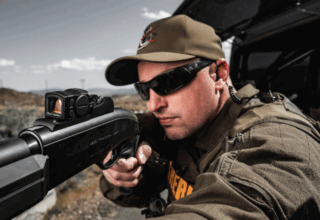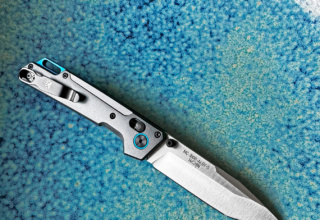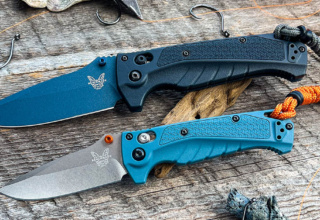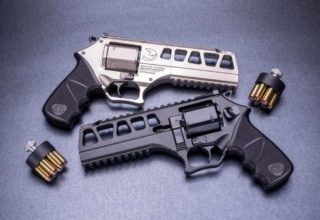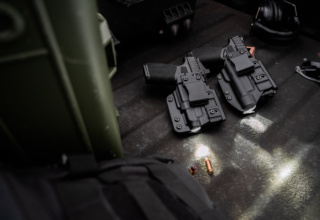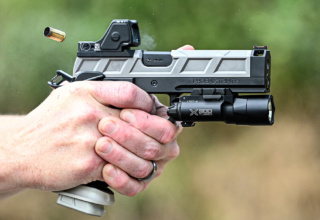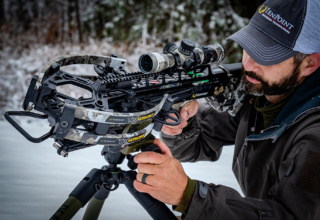If you haven’t figured it out yet, this isn’t the same gobbler game your grandfathers played. Prepping your turkey gun for tighter, harder-hitting shots and an improved sight picture, plus a determination to drop bigger turkey parts into the pot than the next guy is what we’re talking about.
by Larry Case and Rob Reaser
[Part 1 – Ballistics]
Maybe you have noticed that things have changed in the turkey shotgun and ammo world. Once upon a time, most of us used one shotgun for just about everything. Whether ducks, rabbits, pheasants, deer, or turkeys, you grabbed the same scatter gun and went hunting. Thing is, this isn’t your Grandad’s turkey hunting world anymore. Almost everyone you know who hunts these crazy birds in the spring has at least one dedicated turkey shotgun. It’s just how we do it now.
Times change. The total array of available shotgun ammo for turkey hunting is staggering, and for the beginner, it can be intimidating. There is no doubt that the turkey shotgun ammunition we have now is superior to what we had in the past. As turkey populations grew and hunting them became more popular, manufacturers rode the wave and turkey-specific ammo skyrocketed.
Pattern That Shotgun or Stay Home
I am amazed by a lot of things in the turkey hunting world, not the least of which is the number of hunters who still do not pattern — that is, put their shotgun on paper and see what it is doing. If you do not do this and you are not sure where the gun is shooting, you may be in for some real heartbreak when that hard-calling gobbler steps in and looks for you.
Remember that there is a point of aim (POA) where you are aiming on the target and a point of impact (POI), meaning where the pellets actually land. Unfortunately, on some shotguns the POA and the POI are not the same. If the shotgun does not “shoot where it looks” you must adjust for that. Mounting a red dot optic may be the easiest way to do this (more on this later). To pattern your shotgun, take your time and do it right. Don’t do this in a hurry. Driving out to a field, sticking up a piece of cardboard or a pizza box, shooting it one time, and then declaring that to be “good enough” may not yield the best results.
Go to the range and shoot from a bench as you would when sighting in a rifle. Have plenty of target backing and paper. You don’t actually need turkey head targets but we all like to see our pattern on that target. Start with “low brass” game or target loads. You don’t have to bring out the big and more expensive loads yet. You can start at short range — as close as 10 yards — to see where the pellets are hitting. Work out to 40 yards, and when you feel you are good with your POA and POI being the same, you can shoot some of your hunting loads.
Keep in mind that high-powered lead or TSS loads may not shoot the same as your lower-powered shotshells. (The red dot makes this an easy fix.) Knowing exactly where your gun is shooting is going to be a huge confidence booster for you when dealing with unpredictable turkeys.
In the end, we are looking for a nice, even distribution of pellets that will adequately cover the head and neck area of a gobbler. What is adequate becomes a matter of personal preference and opinion in today’s turkey shotshell world. Only a few pellets in the vitals of a turkey’s head and neck will bring a gobbler down. The turkey loads we have available today will often deliver many times that.
Lead or TSS?
We have a few choices for the type of shot we want to shoot at turkeys: lead, bismuth, or Tungsten Super Shot (TSS). Lead has been a standard for shotgun pellets for a long, long time and performs very well. Lead has a density of 11.33g/cc (g/cc being a measurement unit for density), and while this is better than steel (7.86g/cc), neither are in the class of tungsten, which carries an 18.0g/cc density rating. Now stay with me here in this math lesson because for the purposes of shotgun pellets, density is really important. While metals that are dense in their makeup are not necessarily “hard,” tungsten is hard. These hard and dense attributes put tungsten at the top of the pile of best shotgun pellets. Why is that?
When the ignition of a shell occurs in the chamber of a shotgun, many things happen. The shot moves down the barrel with the pellets staying close together — more or less in one unit. When the shot leaves the barrel, though, all heck breaks loose. The pellets immediately begin to separate and spread. Pellets in the middle or the back of the shot column bump into other pellets. In the case of lead, pellets that strike one another often become misshapen and lose their spherical form. These irregular pellets don’t fly as straight as the round ones and they continue to bump into others, becoming the “flyers” you will often see in irregular patterns.
Modern shotshell wads and the inclusion of buffering material with the shot has helped reduce some of these wild antics, but lead is still lead and all this will influence patterns the farther downrange we get.
Some years ago, you began to hear stories of reloading gurus making turkey loads with a strange metal called tungsten (also known as wolfram). Again, with a much higher density and hardness than lead, this new pellet metal started a revolution in the turkey shotgun and shotshell world. Someone, I’m not sure who, named this new shot Tungsten Super Shot, or TSS, and the name stuck.
TSS does three things that make it superior for shotgun shell performance, especially on turkeys. First, because of the properties we have mentioned, TSS pellets travel downrange with less deformation than lead, so the shot column stays tighter and more cohesive — exactly what turkey hunters want. Next, because of its density, hardness, and weight, TSS has terminal ballistics superior to other metal used for shot pellets. Terminal ballistics refers to how a projectile behaves and how it affects the target it hits. This is usually applied when speaking about rifle bullets, but it also pertains to shot pellets. Again, with more weight and more density, TSS will penetrate further into flesh and retain more energy needed to break bones.
Lastly, because of these attributes, TSS does something that has really changed the turkey shotgun and ammo world. Most experts agree that in terminal and overall performance, a #9 TSS pellet (TSS loads are typically loaded with #9s) is equivalent to that of #5 lead. So, think about that. If we can load #9 size pellets and get performance equal to that of a #5, what does this allow us to do? We can load roughly twice as many shot pellets of #9s than we can #5s. A standard 3-inch shell may hold as many as 190 #5 pellets, depending on the size of the shot load. The same shell can hold as many as 500 #9s, depending on the size of the load. Remember, shotshells are loaded by weight for the shot load, so it could be 1 oz.,1 7/8 oz., 2 oz., or whatever.
The point is that with TSS you get a huge amount of shot with #9s and they perform as well or better than larger lead shot. That many pellets allow for some amazing patterns and some very dead turkeys when the pattern is directed at the head and neck.
Having said all that, remember when we mentioned that lead performs pretty well as shotgun pellets? It does if we stay within acceptable ranges in the field. You may want to make 40 yards as your limit with lead-based loads. Forty yards in the woods, as turkey hunters say, is quite a poke. Think about all the turkeys that met their demise before we had TSS loads. Uncountable numbers of turkeys have been taken with lead shot, and you can continue to do so if you keep your shots within 40 yards. (Many will argue here that you can easily go over 40 with some lead loads. If you know your gun and have patterned it at these ranges, go for it.)
Some hunters just want the extra edge that TSS provides if you run into the situation where a turkey hangs up over the 40-yard line. In dealing with the dreaded field turkeys, where your distances might be greater, TSS can be an advantage.
Somewhere in this discussion some will always ask about shotshell size, as in 3- or 3 ½- inch. Bigger may not be better. The performance of modern 3-inch shells — for example, the Fiocchi Golden Turkey and Golden Turkey TSS ammo used in this testing — is so good that it may make the 3 ½-inch shell unnecessary. If you like the 3 ½-inch shell option and your shotgun shoots it well, then have at it.
Choke Selection
Shotgun chokes have been around for at least 150 years. Originally, shotgun barrels had no “choke” or constriction in the barrel — what we now call cylinder bore. As you recall, we said that the pellets in a shotshell start to spread as soon as they leave the barrel. This is fine if you are shooting at something at very close range. To have an adequate pattern to take game or hit clay targets, the shotgun barrel had to be “choked down” to keep the pattern together for longer distances. Older shotguns have “fixed” chokes in that the choke is integral with barrel and the last few inches of the barrel has a smaller diameter than the chamber.
Many years ago (Winchester introduced the first in the 1950s) the screw-in choke was developed, and this allows the shooter to change the choke to serve many different shooting situations.
Probably no topic causes as much argument among turkey hunters as determining which shotgun choke is the best. Facebook, dozens of turkey and shotgun forums, barbershops, and gun counters are rife with this discussion. You will frequently hear a question like, “Hey, what is the best choke for me to use in my Benelli Super Black Eagle 12-gauge for turkeys?” I will maintain there is no “best” choke for every shotgun and shotshell combination. The key to finding what works best for you is the combination of the gun, the shotshell, and the choke.
You can probably take the shotgun out of the equation because that variable isn’t going to change — you are going to use your shotgun. Now, you must find the shotshell and choke duo that will work best. Hopefully, you have a few chokes with which you can experiment. And, yes, you are going to have to buy some lead and TSS loads to put on paper and see what performs best. Almost every shotshell and choke combination will pattern a little differently (or a lot). Turkey shotgun chokes have become quite complex and specialized. For example, Trulock Chokes in Whigham, Georgia, makes chokes for specific shotshell loads, as in for #9 TSS or certain lead loads.
Again, you are looking for the choke and shotshell combination that will give you an even pattern to take turkeys at the ranges you deem necessary. How many pellets you put in a 10-inch circle at thirty or forty yards is up to you. That target with hundreds of holes in the circle is nice to show your buddies, but don’t forget about this: if you are shooting that tight at 40, what does your pattern look like at 20? You won’t know until you test it.
Choosing a good shotshell and choke combination can be challenging but it is not rocket science. Pattern your shotgun to see how it is shooting and call your turkeys into the range where you are confident with the shot. If the gobbler doesn’t want to cooperate today, let him walk and try him tomorrow. – Larry Case
[Part 2 – Prepping for Accuracy and Peak Performance]
Now that we’ve covered the fundamentals of what it takes to get the greatest number of hard-hitting pellets into a turkey’s kill zone, let’s talk about how to do so reliably. In other words, upgrades and maintenance.
But first, working on a shotgun — or any long gun — is so much easier when you have a good support system. Keeping your shotgun steady, at a comfortable working height, and secured so that it won’t slip, drop, or move around when you’re working on it is a major plus.
As mentioned previously, the fastest and most convenient way to get your shotgun to achieve that critical point-of-aim/point-of-impact performance is to install a red dot optic or, at the least, an adjustable open sight system. To do this, a solid and adjustable gun cradle will be your best friend. For this type of work, Real Avid’s Master Gun Workstation is our frequent go-to. You can secure it to a work bench or leave it portable so you can take it to camp or set it on your tailgate for work in the field or at the Back Forty range.
The gun sits on removeable and adjustable front and rear yokes. The front yoke has a form-fitting gripper that retains the forearm while the rear yoke utilizes padded clamping jaws to secure the stock. Once in place, the gun is fully supported, allowing you to easily mount an optic or sight system on your turkey gun.
While there are many features built into the Master Gun Workstation, such as a sliding docking port for Real Avid’s Smart-Assist accessory system, a leveling knob for scope mounting, and assorted storage options for tools and materials, I find the greatest benefit in the integrated tray slots that comprise the base of the unit. I have a bad habit of losing small parts and screws if I’m not careful, and the Workstation’s tray slots solve that issue quite handily.
The Optic Option
A red dot truly is worth the salt on any turkey gun that sports a quality choke and is being fed the latest in high-performance ammunition. No, it is not necessary, but if you want to get the most out of your setup, there is no better piece of gear to add to your gun.
Shotguns, by their nature, are neither built for nor expected to deliver the kind of pinpoint accuracy you get from a rifle. Nevertheless, the tight and far-reaching shot columns you get from modern turkey loads and chokes means aiming is critical — especially at close distances. Red dots give that precision aiming capability and allow you to “zero” a shotgun in mere minutes. By contrast, the conventional way of ensuring POA/POI performance is to adjust the stock’s drop, cast, or length-of-pull, and to try different chokes and shotshell loads until you find something that hits where you are aiming. That’s time-consuming and expensive, and it does nothing for improving your sight picture.
For a roundup of the latest and, in our opinion, some of the best shotgun optics on the market today, check out this recent article.
Low-Buck Sight Upgrade
If electronic optics are not your thing or if you’re looking for a more cost-conscious alternative to a red dot, then the next best option is to get away from that puny front bead and install a fiber-optic front and rear sight system. For that, our choice is a nifty little kit from the folks at HIVIZ.
We did an installation of the company’s C-Series Magnetic Turkey/Deer Sight Set, which you can read about here, along with upgrading a Remington 870 with Timney’s 870 Trigger Fix.
The short story is that this sight system is made to install on shotguns with vented ribs. The front sight has a super-strong magnetic base that fits right over the rib and the factory bead. Nothing more to it than to slap it on. The rear sight uses a slick mounting plate system that secures it to the back third of the rib. Although not windage adjustable, the sight can be raised or lowered for elevation.
With its fiber-optic front and rear alignment dots, the C-Series sight really stands out in dim light and provides that precise alignment you want for gobblers far and near.
Barrel Cleaning
Hate to say it, but shotguns are the oft-neglected members of the firearms family. Perhaps most folks don’t think that a clean barrel is that big of a deal since there is no rifling to foul and, hey, “It’s a shotgun.”
Well, if you want to keep that barrel doing right by the ammo you use and the choke you spent good money on, you’ll keep your barrel clean. And I’m not talking about a casual swipe with an oiled patch attached to a worthless (in my opinion) patch loop. To keep your barrel in fine working order for a lifetime, you need to use a brush and a jag…just like you do when cleaning your rifles and pistols. The procedure is the same. Remove the crud with solvent and a brush, wipe clean and dry with a patch and bore-sized jag, and send a lightly lubed patch down the bore.
A big help when cleaning rifle and shotgun barrels is to secure the work piece in a vise. This makes it easier to position the barrel and to maintain good control of the cleaning rod as you move it through the bore.
For this operation, we again recommend a handy product from Real Avid called the Master Gun Vise. With its multi-axis articulation, you can position the barrel for the most convenient working angles. Interchangeable Smart-Jaws can be selected for optimal clamping and protection of the work piece.
After the barrel, the next most-neglected item on a turkey gun tends to be the choke. If you’ve never removed the choke from your shotgun, you might have a tough time doing so when you’re ready to get serious about patterning.
Chokes thread into the end of the barrel and the threads can become corroded and rust in place over time. You’ll need a compatible choke wrench to remove it from the bore without damage. Should you find yours to be stuck, drip a liberal amount of Kroil down the breech end of the barrel and stand the barrel upright on the muzzle. Let the Kroil to seep into the threads overnight. This should be enough to allow you to unscrew the choke with a choke wrench.
Once the choke is out, give it a thorough cleaning with a solvent like Hoppe’s #9. Pay special attention to the threads. With the threads saturated, scrub them with a good nylon brush to remove any fouling and corrosion. For this, I use an assortment of Real Avid’s Accu-Grip brushes — nylon for general cleaning or phosphor bronze on really junked up threads. Next, wipe the choke dry. You’ll need to do the same for the choke threads in the barrel.
Once the choke and barrel threads are clean, apply a small amount of choke grease to the choke threads and reinstall the choke into the barrel.
It is a good idea to do this procedure before every hunting season.
Lastly, it is a good idea to clean out your shotgun’s internals. Humping through the brush after spring gobblers can cause a lot of dirt and debris to accumulate on the shotguns moving parts, which can lead to increased wear, rust, and potentially cause malfunctions. Follow your owner’s manual for the disassembly and cleaning procedures for your model gun.
Patterning your gun, utilizing the latest in turkey loads, and setting up your shotgun for accurate and reliable performance takes many variables to success out of the equation. Now, if you do everything right and the birds cooperate (and we all know how that goes with turkeys), the only thing left will be to heat up that peanut oil! – Rob Reaser

